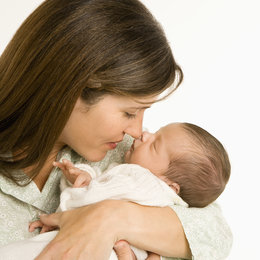Physical Challenges of New Parenthood Having a baby is such an exciting experience. However, this transition is coupled with unexpected physical challenges. For instance, a baby may prefer being held in a certain position that could mean maintaining an abnormal posture for a prolonged duration. In addition, lifting a baby from the bottom of a crib, especially as a baby adds on weight, it could cause strain on the wrists, shoulders, and back. Carrying a baby for extended periods, even with the support of an infant carrier, may also cause shoulder and back pain. Additional activities such as placing and removing babies from car seats may require twisting the body into awkward positions.
Having a baby is such an exciting experience. However, this transition is coupled with unexpected physical challenges. For instance, a baby may prefer being held in a certain position that could mean maintaining an abnormal posture for a prolonged duration. In addition, lifting a baby from the bottom of a crib, especially as a baby adds on weight, it could cause strain on the wrists, shoulders, and back. Carrying a baby for extended periods, even with the support of an infant carrier, may also cause shoulder and back pain. Additional activities such as placing and removing babies from car seats may require twisting the body into awkward positions.
It is important to learn how to effectively maneuver the body while taking care of an infant. Reports indicate that moving the body in an inappropriate manner while carrying out a task causes improper spinal movement, which can lead to low back pain. Improper movement of the torso and hips is also associated with low back pain. Furthermore, slouching and leaning forward while seated (e.g., during feeding time) lead to shoulder and back pain.
Physical Therapists and trainers recommend certain strategies that will help prevent or reduce the occurrence of aches and pain when picking up or feeding infants.
Helpful strategies include:
- Getting as close to the baby as possible and sliding the baby toward the body before lifting the infant, as opposed to simply bending over to lift the infant.

- If the infant is on the floor, position the knees on the floor and bring the baby close to the body before standing in order to avoid straining the back by leaning over.
- When taking an infant out of a stroller, kneel down, then pick up the baby rather than bending from the waist which will strain the lower back.
- When feeding an infant in a high chair, pull up a chair and sit in front of the infant as opposed to simply leaning over to feed the baby.
- When bottle or breastfeeding from a chair, avoid leaning forward. Press the back firmly against the chair and place a pillow under the baby in order to avoid straining the shoulders, elbows, and the lower back. If you are experiencing pain in the neck, shoulders, or back or you are concerned about aggravating a previous injury while taking care of your infant, our trained professionals can show you stretching exercises and physical therapy methods that have proven to be useful. Strength training has been shown to reduce pain and improve muscle performance during repeated movements such as sitting and standing.
Pain and strains can come from many activities. Our Physical Therapists would be happy to assess your current physical state and create a program tailored specifically to your needs and goals. Call Iron City Physical Therapy to make an appointment or to ask any questions you may have.
References
- Dideriksen JL, Gizzi L, Petzke F, Falla D. Deterministic accessory spinal movement in functional tasks characterizes individuals with low back pain. Clin Neurophysiol. 2013; in press.
- Falla D, Gizzi L, Tschapek M, Erlenwein J, Petzke F. Reduced task-induced variations in the distribution of activity across back muscle regions in individuals with low back pain. Pain. 2014; in press.
- Mok NW, Brauer SG, Hodges PW. Failure to use movement in postural strategies leads to increased spinal displacement in low back pain. Spine (Phila Pa1976). 2007; 32(19):E537-543.
- Bullock MP, Foster NE, Wright CC. Shoulder impingement: the effect of sitting posture on shoulder pain and range of motion. Man Ther. 2005; 10(1):28-37.
- Hwang JA, Bae SH, Do Kim G., Kim KY. The effects of sensorimotor training on anticipatory postural adjustment of the trunk in chronic low back pain patients. J.Phys Ther Sci. 2013;25(9):1189-1192.
- Alberta Health Services. Proper lifting technique.




